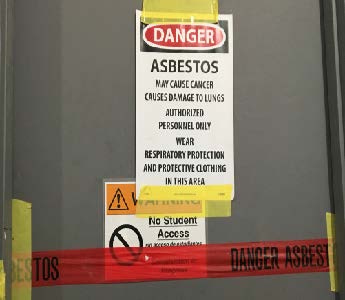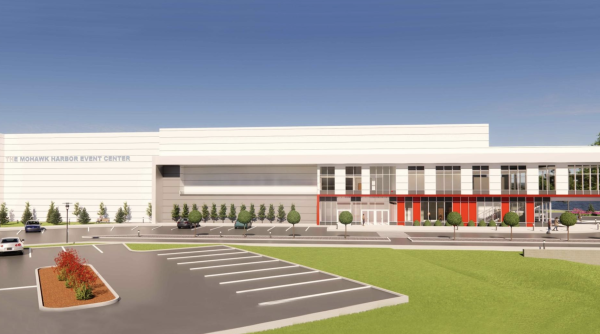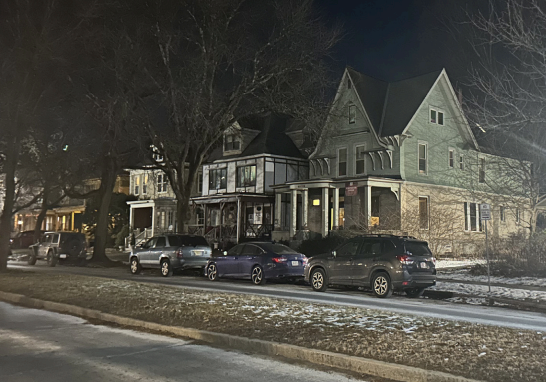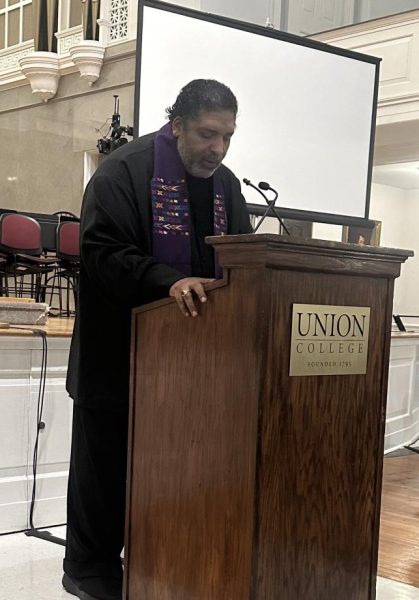Asbestos warnings around S&E

Signs on doors in S&E cautioning about asbestos and prohibiting student access. Photo by Alex Appel.
January 23, 2019
Across the old and new Science and Engineering Complex are warning signs taped to doors warning about asbestos, which, if inhaled or ingested, can lead to serious health complications that will only express themseves decades after exposure. Part of the danger of asbestos is that it cannot be smell, seen or tasted.
Because of this, fibers can be inhaled or swallowed by humans without being detected. Once asbestos is in a human body, it will not leave. As as a result, asbestos particles can abrade at tissue and cause inflammation, scarring and even genetic damage over a period of decades.
The original Science and constructed in the late 1960’s and dedicated in the year 1971. At the time, asbestos used commonly as a building insulator because it is soft, flexible, as well as resistant to heat, electricity and chemical corrosion. It was not the Clean Air Act of 1970 that the federal government first regulated the use of asbestos.
Asbestos only began to be phased out of the construction industry in 1989.
When left undisturbed, asbestos can be harmless. However, during construction, asbestos can enter the air and pose a serious health risk to those involved in construction projects and those in the surrounding areas.
For the past year, the Science and Engineering building has been under construction. Walls have been torn down and, as a result, past insulation systems containing asbestos have been disturbed. When asked about what is being done to contain asbestos particles in the Science and Engineering Complex, Danny Duque did not respond by Monday, January 21, 2019.
Update 01/27/2019: After this article was published Marc Donovan, the Associate Director of Facilities, Utilities Management and Construction for the College responded to our questions regarding asbestos in the old S&E building. The response has been edited for length.
“The S&E project currently under construction contains a demolition phase in preparation for the renovation. This demolition contains an asbestos abatement component. Throughout the building, there are interfacing doors that separate construction from public space with signs indicating risk as you have described. The doors create a visual awareness and to ensure our campus community is aware of the risks beyond the doors and within the construction areas. The exterior doors that are facing the corridors to which our public would interact are the initial barriers and in some cases the first of many barriers to the actual asbestos removal areas. Beyond the initial doors to the construction area, where hazardous material removals are occurring, the area is fully encapsulated within the work zone as an independent area within the construction area (fully contained) with its own sets of entrance doors. If a member of the campus community gained entrance during the workday through the initial door, the person would be escorted out of the area prior to accessing the asbestos removal area. Both federal and state regulations pertaining to asbestos removal procedures are closely monitored by our third-party environmental engineering firm hired directly by the College.
During the workday hours, various doors are required to remain unlocked due to egress regulations for the workers, however, when no work is being performed the doors are locked.
The current schedule for asbestos abatement should continue for approximately another month.”







